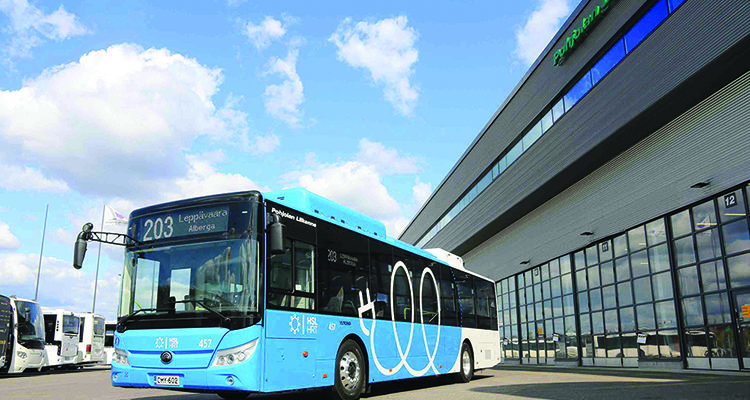All of these lightweighting characteristics help the manufacturer improve the energy efficiency of the electric buses and extend the range they can travel between charging. Although electric buses are more costly to purchase than diesel-powered vehicles, the cost is offset over the years because of their lower energy costs.
Passengers on these electric buses are more comfortable, too, because parts made with composite materials produce less noise and vibration than similar metal parts. In addition, buses made with composite skirts and panels spend more time on the road because they don’t require treatment for body corrosion like buses made from metal. That’s important in Helsinki, which uses salt on its snowy roads in the winter.
“One other driver for using composites is freedom of design. If you want to have specialized designs on the long panels on the side of the bus, that would be quite challenging to do in metal,” Sopanen adds.
Finland’s adoption of electric buses reflects the European Union’s commitment to reducing the urban pollution that’s caused by buses. In 2019, the European Parliament set minimum targets for urban areas making bus purchases. Depending on a country’s gross domestic product (GDP), 24% to 45% of its cities’ bus purchases must be “clean” by 2025, and 33% to 60% must be clean by 2030. The EU dictates that half of those buses must be electric powered and the other half can run on liquefied or natural gas.
Exel, which produces composite parts for many European bus manufacturers, has seen a lot of interest in electric buses. “All of the manufacturers are looking at EVs now, plus there are new players coming into the market to supply electric buses,” says Sopanen. For manufacturers in search of lightweighting options, the company can provide skirting, side panels, internal coves, air ducts, ceiling profiles, flooring, luggage rack parts and cant rails (the section of the bus above the windows, which is canted or angled to connect with the roof).
The introduction of the Yutong electric buses in Helsinki has gone well, and HSL plans to have 400 fully electric buses operating in and around the city by 2025. This should help Finland meet its nationwide target of reducing carbon dioxide emissions by five million kilograms (about 11 million pounds) a year.


